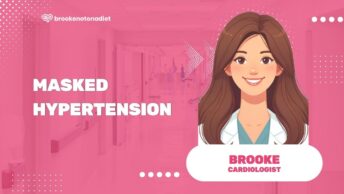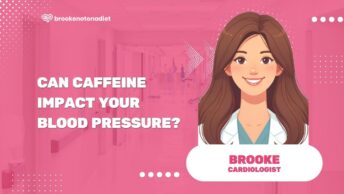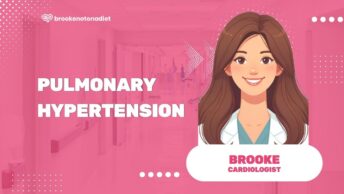If you’ve ever stood up too quickly and felt dizzy, you’ve experienced a brief bout of low blood pressure, or hypotension. It’s a condition that often goes unnoticed but can indicate underlying health issues. In this article, I’ll be diving into the symptoms of hypotension, helping you understand what to look out for.
Hypotension might seem less alarming than its counterpart, hypertension, but it’s just as essential to recognize. From fatigue to fainting, the signs of low blood pressure can be subtle yet disruptive. Stay tuned as I unravel these symptoms, giving you the knowledge to keep your health in check.
What are the types of low blood pressure?
Understanding hypotension necessitates knowing its types. Hypotension isn’t a “one-size-fits-all” health condition. It’s classified into four main types, each with its set of causes and potential treatments.
Orthostatic hypotension (postural hypotension)
The first type we’ll talk about is orthostatic hypotension—also known as postural hypotension. This condition is characterized by a sudden drop in blood pressure when you stand up from a sitting or lying position.
Wondering how Orthostatic hypotension feels? Well, it’s feeling lightheaded or dizzy after standing up, quite common in older adults.
Postprandial hypotension
Next up is Postprandial hypotension. Have you experienced a sudden drop in blood pressure after eating? If yes, that’s likely postprandial hypotension.
This type often occurs within minutes or up to two hours following meals. It’s particularly common in older adults and can be managed by adjusting meal sizes and compositions.
Neurally mediated hypotension
If you’ve ever fainted after standing for long periods or during stressful events, it may actually be Neurally mediated hypotension. This type often affects young people and is caused by miscommunication between the heart and the brain.
Multiple system atrophy with orthostatic hypotension (MSA)
Last but not least, let’s talk about multiple system atrophy with orthostatic hypotension (MSA). This is a rare type involving progressive damage to your autonomic nervous system, which controls involuntary actions, such as heart rate and blood pressure.
Sure, MSA sounds frightening, but remember, it’s rare. So let’s not panic about something that’s unlikely to affect us.
In my journey towards understanding health better, I’ve observed, acknowledging symptoms early can go a long way in securing a healthier life. If you’re feeling dizzy, light-headed, or faint, take a moment to rest, have your blood pressure checked, and unequivocally, delve into the root cause.
Speaking of blood pressure checks, find many reliable blood pressure monitors in the market today! Whether it’s to keep track of your health or just out of curiosity, these handy tools are your stepping stones to healthy blood pressure levels. Remember, your health is a long-term investment that begins with keeping up with any changes in your body.
What is considered a dangerously low blood pressure?
In our comprehensive coverage of hypotension symptoms, one cannot overlook the significance of understanding what is considered dangerously low blood pressure. This knowledge serves as the first step in managing this health condition.
Normal blood pressure is often quoted as 120/80mmHg, though it can vary slightly from individual to individual. Hypotension, or low blood pressure, is generally defined when your blood pressure reads consistently lower than 90/60mmHg.
Here’s a quick guide to blood pressure ranges for adults:
| Blood Pressure Category | Systolic mmHg (upper number) | Diastolic mmHg (lower number) |
|---|---|---|
| Normal | Less than 120 | Less than 80 |
| Hypotension | Less than 90 | Less than 60 |
However, a single low reading isn’t a cause for concern unless you’re experiencing symptoms of low blood pressure. Some individuals may have a lower than average blood pressure that is normal for them.
When my blood pressure monitor showed a reading that I knew was substantially lower than what’s perceived as ‘normal,’ it became a point of concern. Consistently low readings could indicate underlying health issues that necessitate medical intervention. Irregularities left unchecked could invite needless complications. It’s simple yet valuable advice – better be safe than sorry.
Reading this, you might find yourself asking, “What if I am unsure or experiencing possible symptoms?” That’s okay, it’s crucial to take note of and listen to what your body is telling you. Consider seeking medical advice promptly, and if possible, monitor your blood pressure regularly with a reliable blood pressure tool, especially if you’re managing current health conditions.
Remember, knowledge is power, but action is key. Recognizing symptoms early can pave the way for effective treatments and a healthier future. The symptoms may include dizziness, fainting, fatigue, nausea, or blurred vision. Lowering your blood pressure isn’t a matter of concern unless it’s causing distressing symptoms or if it escalates to a condition called “hypotensive crisis”, which needs immediate medical attention.
In my journey, understanding my body, armed with a dependable blood pressure monitor, made a world of difference.
What are the symptoms of low blood pressure?
Now that we’ve covered what constitutes low blood pressure let’s delve right into the symptoms. It’s especially important to note that having a low blood pressure reading doesn’t automatically indicate that something’s wrong. Different individuals may have varying blood pressure ranges, hence it’s entirely possible to have a naturally low reading without experiencing any obvious symptoms. On the other hand, certain situations may cause unfavorable symptoms. So, let’s break it down.
Does Low Blood Pressure Make You Cold?
Absolutely! Moreover, feeling unusually cold is a common symptom of low blood pressure. When your blood pressure dips too low, your body may respond by redirecting blood flow from your limbs to protect your vital organs. As a result, your hands and feet may feel cold and you could also potentially feel chilly all over.
This blood redirecting safeguard is your body’s way of prioritizing necessary functions, but it can leave you cold. If you couple this with other symptoms such as lightheadedness or fatigue, it’s necessary to check the numbers on your blood pressure monitor.
Speaking of other symptoms, let’s take a closer look at them. It’s time to understand when it’s more than just feeling a bit cold.
Common Symptoms of Low Blood Pressure
I’ve compiled a list of some of the most common symptoms. Remember that the manifestation of these symptoms largely hinges upon the cause of one’s low blood pressure.
- Dizziness or lightheadedness
- Fainting (or syncope)
- Lack of concentration
- Blurred vision
- Nausea
- Fatigue
- Rapid, shallow breathing (or hyperventilation)
- Depression
While these are common for most people suffering from hypotension, the specific symptoms can vary and there might be more than those enlisted here. It’s important to recognize these signs and seek help when they’re prolonged or out of the ordinary.
By checking blood pressure at regular intervals with a dependable blood pressure monitor, you can keep track of your numbers. This can be vital in identifying if you have a dangerously low blood pressure or not.
By the way, if you’re curious about various blood pressure ranges, let’s look at a blood pressure chart. It might be helpful to understand the ranges and where you stand.
| Blood Pressure Category | Systolic BP | Diastolic BP |
|---|---|---|
| Normal | Less |
What are the causes of low blood pressure?
Having touched on the symptoms, it’s vital to delve into what triggers low blood pressure. Understanding the causes can help in preventing and managing this condition.
What Conditions can Cause Low Blood Pressure?
Many factors can cause low blood pressure, some pertaining to health conditions:
- Heart Problems: Conditions like heart failure, low heart rate, or heart valve issues can disrupt blood flow, possibly lowering blood pressure.
- Endocrine Problems: Disorders such as Addison’s disease, hypothyroidism, or even diabetes can lead to low blood pressure.
- Dehydration: Losing a lot of fluids, whether through excessive sweating, diarrhea, or vomiting, can cause a decrease in blood volume, leading to a lowering of blood pressure.
- Blood Loss: Losing a lot of blood, as in the case of a major injury or internal bleeding, reduces the amount of blood in your body, leading to a drastic drop in blood pressure.
Note: Regularly checking your blood pressure using a reliable blood pressure monitor is a good practice
What Medications can Cause Low Blood Pressure?
Certain medications can also result in a drop in blood pressure. It’s important to take note of them, especially if you’re already susceptible to low blood pressure. Here are few examples:
- Diuretics
- Beta blockers
- Drugs for Parkinson’s disease
- Certain types of antidepressants
- Sildenafil – particularly in combination with heart medication
If you’re taking any of these medications, it’s suggested to regularly maintain a blood pressure chart to monitor any sudden changes.
Next, we’ll delve into how to handle and remedy low blood pressure situations. Knowing the triggers and symptoms is only part of the story; it’s also about effective management and prevention. So, let’s turn our attention to how you can take control of your health if and when low blood pressure strikes.
What are the risks factors of low blood pressure?
The symptoms of low blood pressure, or hypotension as it’s also known, can range from mild to life-threatening. Understanding the risk factors can help one avoid situations that might provoke these symptoms.
What Causes a Sudden Drop in Blood Pressure?
Several factors might lead to a sudden drop in your blood pressure:
- Prolonged bed rest: Lack of physical activity can cause a decrease in your blood pressure.
- Pregnancy: During the first 24 weeks of the pregnancy, a woman’s blood pressure might drop.
- Heart problems: Conditions like heart attack or heart failure might cause a decrease in blood pressure.
- Endocrine issues: Thyroid issues, Addison’s disease, and low blood sugar might lead to decreased blood pressure.
- Dehydration: Insufficient fluid intake can lead to a sudden drop in blood pressure.
- Hemorrhage or severe blood loss: This can cause a sudden decline in blood pressure.
It’s important that you regularly monitor your blood pressure, especially if you have some underlying condition that might trigger significant alterations. A blood pressure monitor can be a useful tool. However, a sudden lowering of blood pressure isn’t always a cause for concern. But if you experience dizziness, fainting, or feel lightheaded, it’s important to consult a specialist to determine the potential origin of your sudden hypotension.
This is not the ending of our discussion on low blood pressure. Further elaboration on remedies would follow in the next section to help assure control in such situations.
How is low blood pressure diagnosed?
In diagnosing low blood pressure, your doctor will start by conducting a thorough physical examination. They’ll get your medical history, assess your symptoms, and possibly request special tests.
First, a blood pressure monitor is used in the initial screening. This common medical device measures the force exerted by your heart when pumping blood. It’ll give two readings: Systolic and Diastolic.
With low blood pressure, your concern is a reading lower than 90 systolic or 60 diastolic.
In case your monitor readings are consistently low and you’re experiencing symptoms like dizziness or fainting, your doctor may order tests to identify the cause. These could include:
- Blood tests: These are vital for checking blood sugar levels and evaluating your overall health.
- Electrocardiogram (ECG): An ECG records the electrical signals in your heart. It’s an excellent tool for identifying heart conditions that might be causing your low blood pressure.
- Stress test: Sometimes, blood pressure drops significantly when you’re exercising. A stress test involves monitoring your blood pressure while you’re on a treadmill or stationary bike.
- Tilt table test: This test studies how your blood pressure responds to changes in position. It can often uncover underlying disorders that lead to a sharp drop in blood pressure when standing from a lying position.
What are the treatment methods for low blood pressure?
Treatment methods for low blood pressure are comprehensive**.** They often depend on the underlying causes and your specific symptoms. Some may require medications. Just as you would consult a blood pressure chart or use a blood pressure monitor to understand and monitor your readings, you’ll also need to understand the medications prescribed, their purpose, and any potential side effects. Let’s delve deeper into the various medications employed in managing low blood pressure.
What Medications are Used to Treat Low Blood Pressure?
Several medications are used to treat low blood pressure. Here’s a breakdown of several common ones:
- Fludrocortisones: This boosts your blood volume, increasing blood pressure.
- Midodrine (Orvaten): This prevents blood pooling in your legs, increasing blood pressure.
It’s crucial to realize each of these medications comes with potential side effects that can compound health concerns.
What are the Side Effects of These Medications?
Despite being essential in lowering blood pressure. it’s paramount to realize all medications could have side effects. Here are the common side effects for the medications mentioned above:
- Fludrocortisones: Potential side effects include a headrush or dizzy spell upon standing, increased heart rate, and heart palpitations.
- Midodrine (Orvaten): Users may experience feelings of numbness, tingling or prickling sensations, and chills or coolness of the skin.
While checking blood pressure regularly is crucial, understanding the medications and their side effects forms another imperative layer of managing low blood pressure.
Stay in regular consultation with your doctor about the effects of medication, side effects, and any necessary adjustments to ensure optimal health while managing blood pressure. Monitoring these medications should be seen as part of the broader objective of regular blood pressure checks, symptom management, and overall wellness.
How to raise blood pressure naturally?
So, now you’re probably wondering: how can I raise my blood pressure naturally? Well, don’t worry—I’ve got you covered. Let’s delve into this topic and explore some tips that can help you adjust your blood pressure to healthier levels.
Firstly, increase your fluid intake. Staying hydrated can have a substantial effect on your blood pressure. Hydration helps increase blood volume which in turn raises blood pressure levels. Now this doesn’t mean I’m telling you to down a gallon of water in one go. It’s more about being consistent and ensuring you’re getting an adequate amount of fluids throughout the day. So, try to aim for about eight 8-ounce glasses of water daily.
Secondly, consume more salt. Salt is proven to increase blood pressure. Before you start shaking that salt shaker all over your meals, let me remind you—moderation is key. Excessive salt consumption wouldn’t be beneficial for anyone. Do consider your other dietary needs and seek advice from a healthcare professional before making drastic changes to your salt intake.
Thirdly, avoid alcohol and limit caffeine intake. While you may love your daily cup (or cups) of coffee, high amounts of caffeine can cause spikes in your blood pressure. Similarly, while some studies suggest that moderate alcohol intake may have certain health benefits, excessive consumption can undoubtedly lead to increased blood pressure.
Lastly, try compression stockings. Typically known for managing varicose veins and preventing deep vein thrombosis, these stockings can significantly help in raising blood pressure levels. By applying pressure to your legs and improving blood flow, these stockings effectively assist in preventing blood from pooling in your veins thereby helping increase your overall blood pressure.
Price ranges for some common blood pressure monitors:
| Brand | Model | Price |
|---|---|---|
| Omron | Platinum | Around $80 |
| Withings | BPM Connect | Around $100 |
| Qardio | QardioArm | Around $90 |
It’s worthwhile checking your blood pressure regularly. Having a home blood pressure monitor can provide valuable insight into how your body responds to these natural methods of adjusting blood pressure. It’s important to keep in mind that everyone’s body responds differently. What works for someone might not work for you, so persistence and patience are vital in managing your blood pressure naturally.
What are the dangers of low blood pressure?
Low blood pressure, medically termed as hypotension, might not seem as threatening as high blood pressure. In fact, for some people, it may bespeak good health and a lowered risk of heart disease. However, when blood pressure drops too low, it can limit the amount of blood flowing to your organs. This means your brain, heart, among others, aren’t getting enough oxygen and nutrients to function effectively, thus posing a serious risk.
When to Call a Doctor?
While low blood pressure doesn’t always call for concern, there are situations when it’s crucial to seek medical attention. Some indicators include:
- Prolonged fatigue
- Dizziness or lightheadedness
- Fainting (syncope)
- Blurred vision
- Lack of concentration
- Rapid, shallow breathing (hyperventilation)
- Depression
- Dehydration and unusual thirst
Remember, it’s essential to be aware of situations where low blood pressure signals a need for medical attention. Now, since we’re considering the importance of being informed, it’s pertinent we delve into understanding blood pressure ranges.
Understanding Blood Pressure Ranges
Having a blood pressure monitor at home enables my regular checking of blood pressure. As I go along, I’ve learned it’s vital to note the figures and what they represent. Here’s a simple table to guide you:
| Blood Pressure Category | Systolic mm Hg (upper number) | Diastolic mm Hg (lower number) |
|---|---|---|
| Normal | Less than 120 | Less than 80 |
| Elevated | 120 – 129 | Less than 80 |
| Hypertension stage 1 | 130 – 139 | 80 – 89 |
| Hypertension stage 2 | 140 or higher | 90 or higher |
| Hypertensive crisis | Higher than 180 | Higher than 120 |
Do note, low blood pressure is a reading of 90/60mmHg or lower. Always consult with your healthcare provider if you’re uncertain about your readings.
As we progress, let’s explore how these natural methods I’ve outlined earlier interact with medical treatments for managing low blood pressure.
How low blood pressure can be prevented?
While low blood pressure or hypotension may appear less concerning than high blood pressure, it can pose significant health risks that should not be overlooked. For many, managing low blood pressure is equally vital as managing high blood pressure. Fortunately, several proactive measures can help with this.
Firstly, regular checking of blood pressure is key. There’s a variety of blood pressure monitors available in the market for personal use. These devices can be a practical option for people needing to maintain a close watch on their blood pressure. Simultaneously, regular visits to a healthcare provider are just as important to comprehensively evaluate your blood pressure condition.
Next is diet modification. Hydration plays a crucial role in managing blood pressure, so it’s essential to consume an adequate amount of fluids. Moreover, in certain cases, slightly increasing salt intake under medical supervision can also contribute to raising blood pressure.
Thirdly, exercise. Regular physical activity stimulates blood circulation, which can be beneficial in regulating blood pressure. Depending on your health condition, various exercises from light stretching to brisk walking may be suitable.
Lastly, lifestyle changes. The utilization of compression stockings, avoiding alcohol, and careful body position transitions (especially from sitting/lying to standing) can assist in maintaining healthy blood pressure.
While these actions can aid in preventing low blood pressure, it’s vital to remember they do not replace professional medical advice. Always consult your healthcare provider before embarking on any new health regimen.
Let’s put these points in a concise bullet list for easy reference:
- Regularly monitor your blood pressure, either using a blood pressure monitor or through routine check-ups with your healthcare provider.
- Modify your diet. Stay well-hydrated and consider a slight increase in salt intake, as advised by a medical professional.
- Maintain a regular exercise routine to stimulate blood circulation.
- Make lifestyle changes such as using compression stockings, reducing alcohol intake, and being mindful of body position transitions.
Remember, consistent attention and a proactive approach play a big part in preventing low blood pressure.
How to check blood pressure with home monitor?
Knowing how to monitor your blood pressure at home correctly can be a proactive way to catch potentially severe health concerns early. But before getting started, it’s essential to pick the right tool. Let’s discuss the most accurate blood pressure monitors available.
What Blood Pressure Monitors are Most Accurate?
The accuracy of a blood pressure monitor is crucial when I’m checking blood pressure at home. It’s beneficial to get something that health professionals utilize because such machines are typically of high quality.
Some of the highly-rated monitors include:
- Omron Platinum Blood Pressure Monitor
- Greater Goods Blood Pressure Monitor Cuff Kit
- Withings BPM Connect – Wi-Fi Smart Blood Pressure Monitor
The monitor should match the blood pressure ranges marked on a conventional blood pressure chart. By matching it with accepted standards, we ensure it’s a reliable means of detecting and preventing low blood pressure or even hypertension.
| Recommended BP Monitors | Price Range | Special Features |
|---|---|---|
| Omron Platinum | High | Dual Display, Bluetooth connectivity |
| Greater Goods | Medium | Easy-read Display, two-user capacity |
| Withings BPM Connect | High | Wi-fi and Bluetooth enabled, Multi-user |
Let’s dive into how we can effectively use these monitors at home for checking blood pressure.
- Relax: Make sure to sit at a quiet place. Try to keep cool and don’t rush.
- Prepare the Monitor: Lay your arm on a flat surface with the upper arm at heart level. Wrap the cuff correctly around your upper arm – not too tight or loose.
- Check Your Position: Ensure you’re seated comfortably with both feet flat on the floor. This posture helps in getting accurate readings.
- Start the Device: Once you’re comfortably positioned turn on the monitor and follow the instructions as given in the manual.
- Record the Results: It’s important to record the readings each time. This could be in a notebook or, if the monitor has advanced features, it could automatically save previous readings.
Final words
I’ve shared a wealth of knowledge on hypotension symptoms and the importance of monitoring blood pressure at home. It’s clear that by using a quality blood pressure monitor, you stand a better chance of catching signs of hypotension early. Remember, proper use is key. Relax, position yourself correctly, and record your results consistently. Armed with this information, you’re now ready to take control of your health. It’s a proactive step towards preventing severe hypotension and its potential complications. So, don’t wait till it’s too late. Start monitoring your blood pressure today. It’s your health, your life, and you’ve got the power to make it better.







